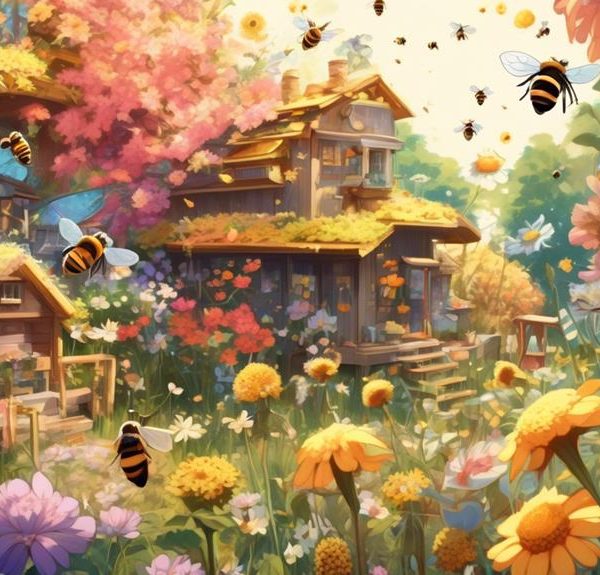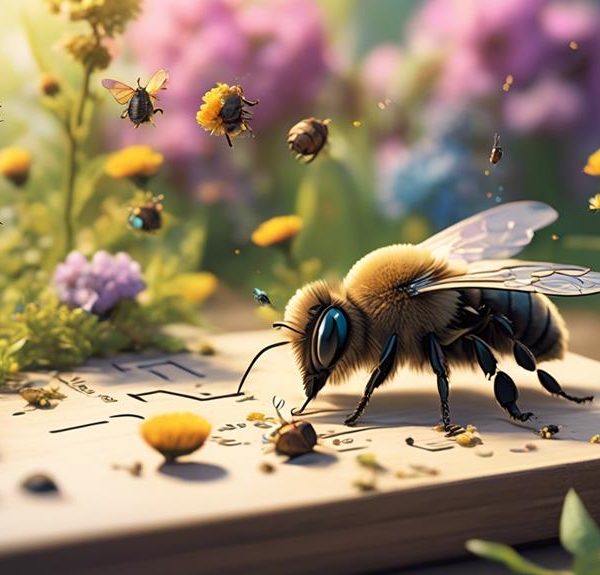Baffled by mason bees' emergence in fall as well as spring? Unravel the mystery behind this intriguing insect behavior.

Can Mason Bees Emerge in the Fall and Spring?
Peeling back the layers of a mason bee's life is akin to unraveling a ball of yarn: complex, intricate, and full of surprises. You might have noticed these industrious insects buzzing around in the spring, but did you know they can also emerge in the fall? It's a surprising facet of their life cycle that's not commonly understood.
Just as the leaves change colors and cool winds begin to blow, mason bees can indeed make a second debut. But what factors influence this unusual phenomenon and how does it impact the mason bee population? Let's unfold this mystery together.
Key Takeaways
- Mason Bees can emerge in both the fall and spring, depending on the species.
- Their emergence is triggered by temperature and daylight changes.
- Early blooming of plants and unseasonably warm weather can influence their emergence.
- Providing a safe habitat, diversifying the garden with flowering plants, and avoiding pesticides can support Mason Bees.
Understanding Mason Bees
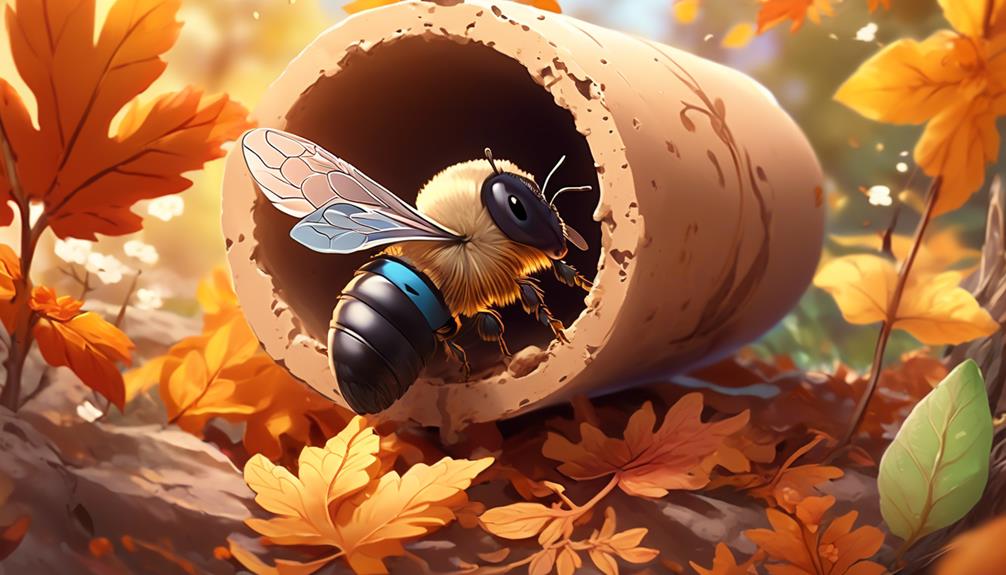
To fully appreciate the peculiarities of Mason Bees, you need to delve into their unique biological traits and behaviors, starting with their remarkable seasonal emergence in both fall and spring. Unlike many of their bee counterparts, Mason Bees don't live in hives. Instead, they're solitary creatures that nest in tiny holes in wood or in the ground, laying their eggs in the fall. These eggs then transform into larvae, which hibernate through the winter months.
When spring arrives, the larvae metamorphose into adult bees, ready to pollinate and reproduce. Interestingly, you'll observe that most species of Mason Bees emerge in the spring, while others emerge in the fall. This twice-yearly emergence isn't just a fascinating phenomenon; it's a crucial aspect of their life cycle.
It's also essential to note that these bees don't produce honey. Instead, their primary role in nature is pollination, making them indispensable to the ecosystem. They're also non-aggressive, rarely stinging unless threatened.
Life Cycle of Mason Bees
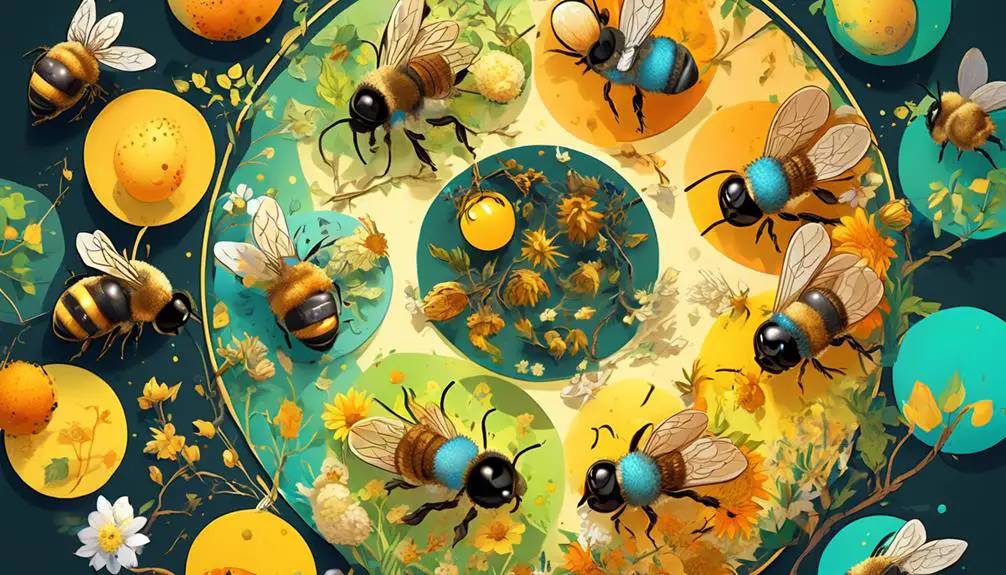
Understanding the life cycle of Mason Bees, an integral component of biodiversity, requires a close examination of their reproductive habits, their seasonal routines, and the environments they choose for nesting.
In spring, adult males emerge from their cocoons first, followed by females. After mating, the males die off, while females begin their industrious task of nest building. They select small cavities, filling them with a single egg and food for the larva. This process continues until the female's death.
Summer witnesses the eggs' transformation into larvae. They'll consume the stored food, spin a cocoon, and pupate. By fall, they become adult bees but remain in their cocoons throughout winter, waiting for spring's warmth to emerge.
This cycle is influenced by external factors like weather and habitat availability. Unseasonably warm fall weather can trick bees into emerging early, potentially impacting their survival. As solitary bees, they don't have a hive to return to for protection or sustenance.
Understanding this life cycle is crucial for preserving these vital pollinators. They face threats from habitat loss and climate change, and it's our responsibility to help them thrive.
Mason Bees' Seasonal Emergence
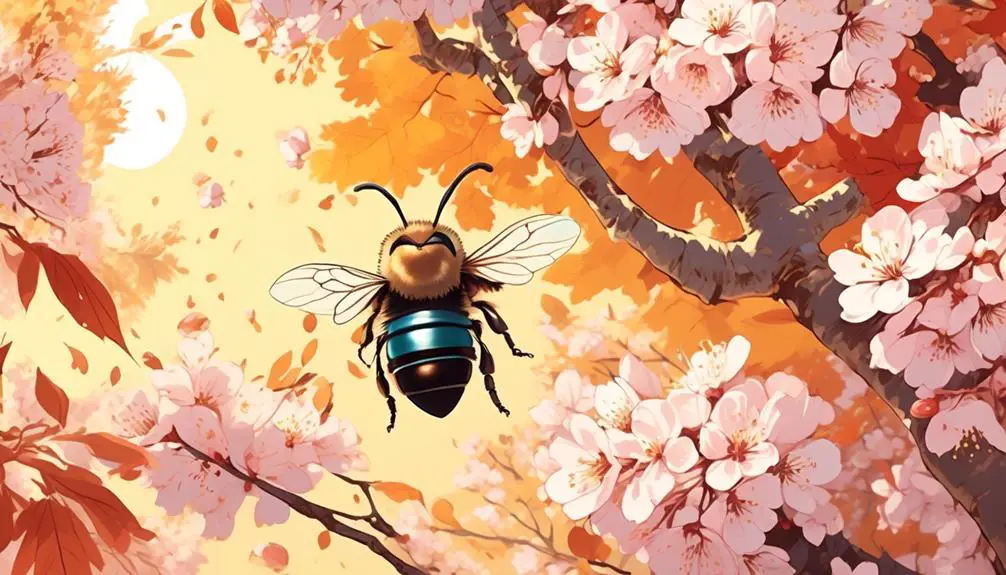
In the dance of seasons, you'll notice Mason Bees emerging twice a year, once in the spring and again in the fall, a unique pattern dictated by their life cycle and environmental stimuli. This isn't a random occurrence. It's a calculated adaptation developed over countless generations, synchronizing their biological rhythms with the rhythm of the changing seasons.
In spring, you'll observe the first emergence of adult Mason Bees from their overwintering cocoons. This emergence is triggered by warming temperatures and increasing daylight, signaling the availability of their primary food source: nectar and pollen from blooming plants.
When fall rolls around, you'll witness the second wave of emergence. This time, it's the young Mason Bees, which spent the summer developing within their individual mud cells, making their debut into the world. The dropping temperatures and declining daylight act as stimuli, signaling them to prepare for the upcoming winter.
Though they've a short lifespan, Mason Bees have a crucial role in the ecosystem as efficient pollinators. Their double emergence is a testament to their adaptability and resilience, a fascinating spectacle for anyone interested in the intricate dance of nature.
Influencing Factors on Emergence

While observing the double emergence of Mason Bees is undoubtedly fascinating, it's also crucial to explore the environmental and biological factors that influence this unique pattern. The most significant factors are temperature and daylight.
Mason Bees are temperature-sensitive creatures. They're programmed to emerge when the temperature rises above a certain threshold, usually in spring. However, irregular weather patterns, such as unseasonably warm periods in late fall or winter, can trick the bees into thinking it's spring, causing them to emerge early.
Daylight, specifically the length of daylight hours, also impacts their emergence. As days become longer in the spring, Mason Bees are triggered to emerge from their cocoons. However, if there's an unusual increase in daylight hours during the fall, bees might be deceived into another emergence.
Further, the bees' food sources play a role too. If plants that provide pollen and nectar bloom earlier due to warm weather, bees may emerge to feed.
Lastly, the bees' biological clock is a factor. It regulates their lifecycle stages, including emergence. However, environmental stressors can disrupt this clock, leading to an unexpected fall emergence. It's a complex interplay of factors, showing how sensitive Mason Bees are to their environment.
Tips for Supporting Mason Bees
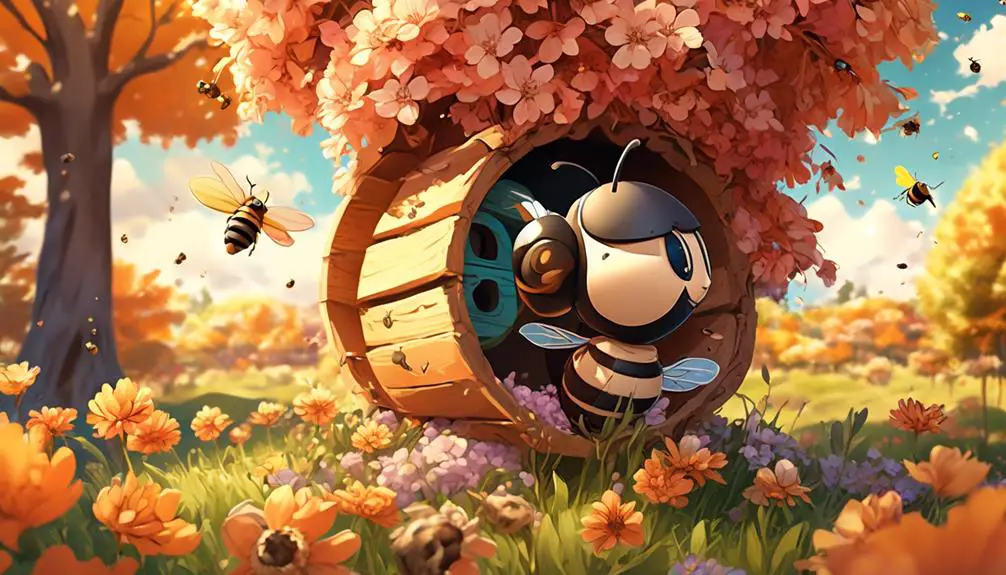
To effectively support Mason Bees in your garden, it's crucial to consider their specific environmental needs and habits. As solitary bees, they don't live in hives like honeybees, but in small holes, often in wood or clay. You can provide a safe habitat by installing bee houses with hollow reeds or tubes, which mimic their natural nesting sites.
Mason bees require mud to seal off their nests. Make sure there's a source of wet soil near the bee house. They also need a variety of plants for pollen and nectar. You should diversify your garden to include a range of flowering plants that bloom throughout the bee's active season.
Avoid using pesticides, which can harm these beneficial insects. Instead, opt for organic gardening practices. Providing a water source, like a shallow dish with stones for the bees to land on, is also important.
Bear in mind, Mason bees are more active in cool temperatures compared to other bees, so place the bee house in a shady spot.
Observing these tips won't only help Mason bees thrive, but will also enhance the overall health of your garden.
Conclusion
You've learned that mason bees can emerge both in the fall and spring, depending on certain factors like weather and food availability.
It's essential to create a supportive environment to help these beneficial pollinators thrive.
Remember, their emergence isn't just a fascinating natural event, it's also a key part of our ecosystem's health.
Keep nurturing your local mason bees and you'll contribute to the well-being of our planet.

